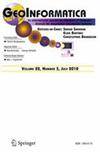利用几何约束提高交通标志图像分类器的自动分割性能
IF 2.6
4区 计算机科学
Q3 COMPUTER SCIENCE, INFORMATION SYSTEMS
引用次数: 1
摘要
从图像中自动检测和识别交通标志是许多应用中的一个重要课题。首先,我们使用分类算法对图像进行分割,以描绘更有可能发现迹象的区域。在这方面,阴影、具有相似颜色的对象和极端照明变化会显著影响分割结果。我们提出了一种新的基于形状的算法来提高分割的准确性。该算法通过结合符号几何结构来从分类结果中过滤出错误的像素。我们进行了几次测试,将我们的算法的性能与支持向量机(SVM)、K-Means和K-Nearest Neighbours等流行技术获得的性能进行了比较。在这些测试中,为了克服不需要的照明效果,将图像转换到颜色空间Hue、Saturation和Intensity、YUV、归一化红-绿-蓝和Gaussian。在本研究中使用的传统技术中,将SVM应用于转换到高斯颜色空间的图像获得了最好的结果。比较结果还表明,通过添加本研究中提出的几何约束,标志图像分割的质量提高了10%-25%。我们还比较了通过将符号几何与U形深度学习算法相结合而增强的SVM分类器。结果表明,这两种技术的性能非常接近。如果提供更全面的数据集,也许深度学习的结果可以得到改善。本文章由计算机程序翻译,如有差异,请以英文原文为准。
Using geometric constraints to improve performance of image classifiers for automatic segmentation of traffic signs
Automatic detection and recognition of traffic signs from images is an important topic in many applications. At first, we segmented the images using a classification algorithm to delineate the areas where the signs are more likely to be found. In this regard, shadows, objects having similar colours, and extreme illumination changes can significantly affect the segmentation results. We propose a new shape-based algorithm to improve the accuracy of the segmentation. The algorithm works by incorporating the sign geometry to filter out the wrong pixels from the classification results. We performed several tests to compare the performance of our algorithm against those obtained by popular techniques such as Support Vector Machine (SVM), K-Means, and K-Nearest Neighbours. In these tests, to overcome the unwanted illumination effects, the images are transformed into colour spaces Hue, Saturation, and Intensity, YUV, normalized red green blue, and Gaussian. Among the traditional techniques used in this study, the best results were obtained with SVM applied to the images transformed into the Gaussian colour space. The comparison results also suggested that by adding the geometric constraints proposed in this study, the quality of sign image segmentation is improved by 10%–25%. We also comparted the SVM classifier enhanced by incorporating the geometry of signs with a U-Shaped deep learning algorithm. Results suggested the performance of both techniques is very close. Perhaps the deep learning results could be improved if a more comprehensive data set is provided.
求助全文
通过发布文献求助,成功后即可免费获取论文全文。
去求助
来源期刊

Geoinformatica
地学-计算机:信息系统
CiteScore
5.60
自引率
10.00%
发文量
25
审稿时长
6 months
期刊介绍:
GeoInformatica is located at the confluence of two rapidly advancing domains: Computer Science and Geographic Information Science; nowadays, Earth studies use more and more sophisticated computing theory and tools, and computer processing of Earth observations through Geographic Information Systems (GIS) attracts a great deal of attention from governmental, industrial and research worlds.
This journal aims to promote the most innovative results coming from the research in the field of computer science applied to geographic information systems. Thus, GeoInformatica provides an effective forum for disseminating original and fundamental research and experience in the rapidly advancing area of the use of computer science for spatial studies.
 求助内容:
求助内容: 应助结果提醒方式:
应助结果提醒方式:


